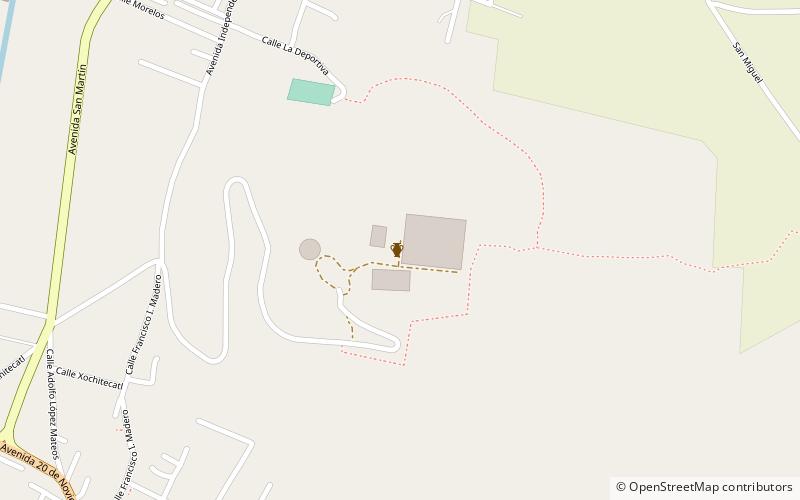Xochitecatl


Facts and practical information
Xochitecatl, an ancient Mesoamerican archaeological site, is nestled atop a volcanic hill in the Tlaxcala Valley of Mexico. This pre-Columbian complex, dating back to the Middle Preclassic period around 800-400 BCE, offers a unique window into the ritualistic and civic practices of the cultures that thrived in the region prior to the ascendancy of the Aztec Empire.
The site is distinguished by its impressive circular pyramid, known as the Pirámide de la Espiral, which demonstrates the sophisticated architectural capabilities of its builders. Unlike the more familiar stepped pyramids of the Maya or Aztecs, this structure's spiral form is a unique feature that captivates archaeologists and visitors alike. Xochitecatl also boasts several other significant structures, including the Pirámide de las Flores, the largest building at the site, which once served as a prominent ceremonial center.
One of the most intriguing aspects of Xochitecatl is its relationship with the nearby sister city of Cacaxtla. The two sites are believed to have shared a close cultural and political connection, evident in the complementary nature of their urban planning and construction. This connection underscores the complexity of pre-Columbian societies in Mesoamerica and their intricate networks of alliances and exchanges.
Xochitecatl's strategic location offers panoramic views of the Tlaxcala Valley, suggesting a strategic defensive role and a place of astronomical and ceremonial significance. The site's alignment with various celestial events underscores its importance as a center for ritualistic observance, with the volcanic hill amplifying its spiritual significance.
Puebla
Xochitecatl – popular in the area (distance from the attraction)
Nearby attractions include: Cacaxtla, Nativitas.


